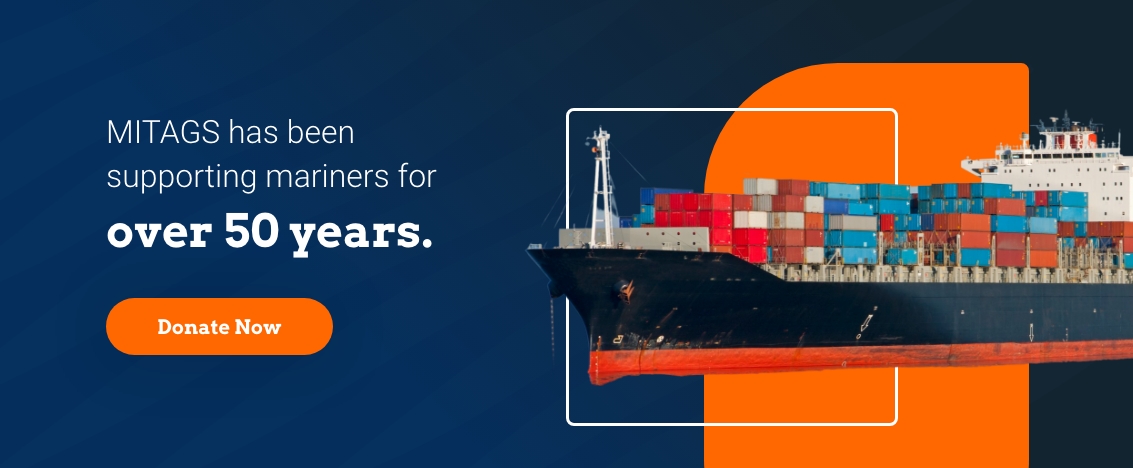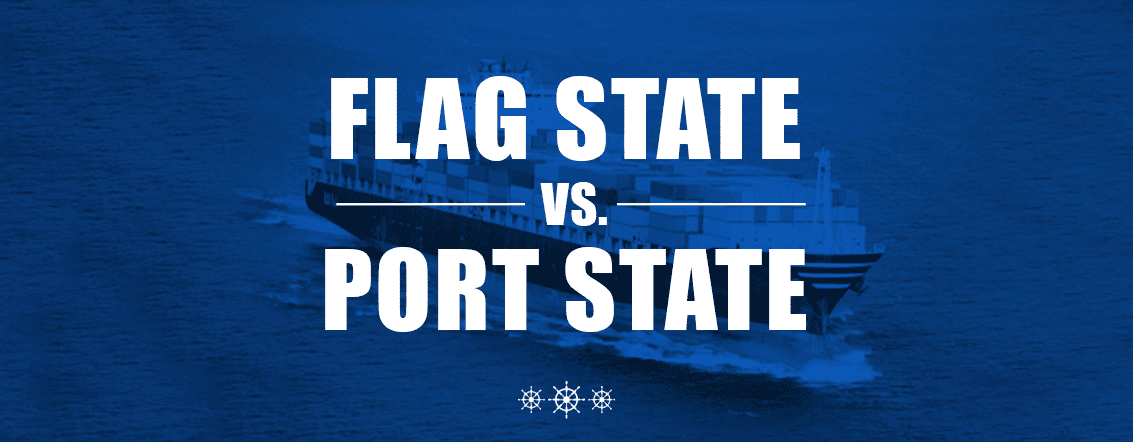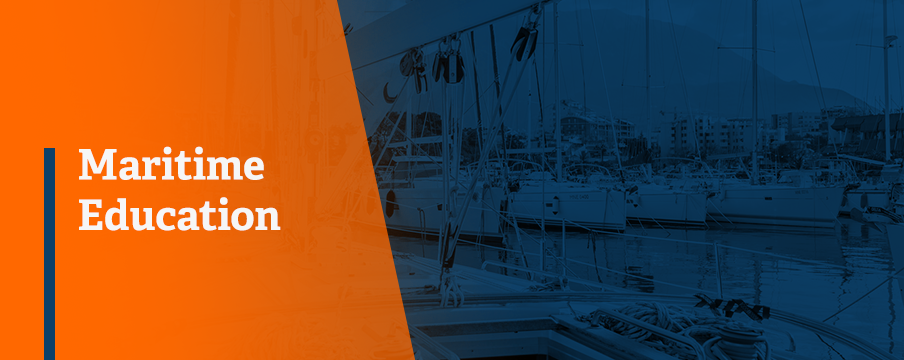What is an able seaman? An able seaman is someone legally certified by the U.S. Coast Guard to perform on-deck duties aboard merchant vessels. This certification is required to crew vessels over 100 gross tons. An able seaman can work in a variety of marine industries and helps with vessel operations, maintenance and safety.
If you’re thinking about going to maritime training school and getting your able seaman endorsement, you’re serious about being on the water. You love the adventure, the freedom and the dynamic lifestyle that come with working at sea. If you’ve accumulated the proper sea service requirements, you can enroll in a U.S. Coast Guard-approved able seaman course and be on your way to a unique and exciting career.
Throughout this article, we’ll cover everything you’ll want to know about Getting Certified As an Able Seaman:
- What Does an Able Seaman Do?
- The Life of an Able Seaman
- Work Schedule of an Able Seaman
- How Do I Get Certified As an Able Seaman?
- The Code of Federal Regulations
- What Is the Average Salary of an Able Seaman?
- Career Advancement As an Able Seaman
- Should I Take an In-Person or an Online Able-Bodied Seaman Course?
- Enroll in the MITAGS Able Seaman Course to Begin Your Career
You probably have some questions about the able seaman requirements. Like anything that deals with the U.S. Coast Guard, the answers can be complicated. You may find the information you seek is scattered and a single source has not fully answered your questions. That’s why we made this comprehensive guide to help you through the process. We’ll answer common questions, such as:
- What does an able seaman do?
- How do I get certified as an able seaman?
- What is the average salary of an able seaman?
- Should I take an able-bodied seaman course in person or online?
Let’s get underway.
WHAT DOES AN ABLE SEAMAN DO?
Able seamen help with vessel operations, maintenance, safety and in some cases customer service. Day-to-day duties include operational duties, maintenance duties, ensuring best safety practices are followed and in some cases outstanding customer services.
Day-to-day duties include four main categories:
- Operational: An able seaman assists the commanders of a vessel during all normal operations. This includes helping with lines, using machinery, navigating, watchstanding and even driving.
- Maintenance: As an on-deck crew member, you might be responsible for resurfacing decks and structures, as well as cleaning and fixing machinery, lines and tools.
- Safety: Certified crew members know the best safety practices and frequently run safety drills. An able seaman knows how to operate firefighting and lifesaving equipment and how to instruct passengers in the event of an emergency.
- Service: Crew members aboard customer-oriented vessels like cruise ships and private yachts frequently encounter passengers. They must balance their primary duties with outstanding customer service and maintain a professional appearance.
Working as an able seaman will hone your skills as a mariner and prepare you to move up in the ranks. If you’re a hard worker and thrive in a fast-paced environment, life on the water can lead to some amazing adventures.
THE LIFE OF AN ABLE SEAMAN

Your life as an able seaman depends largely on the type of boat you choose to work on. Before you get too far into your career, figure out what type of marine industry suits you best, and then focus on gaining experience in that field. For example:
- You might want to work on a superyacht. You’ll cater to the wealthy, get a taste of their lifestyle and earn money traveling the world.
- If the service industry isn’t for you, you may be interested in working as a commercial fisherman or working on a cargo ship.
- Or maybe you’re a purist who likes the serenity and skill that comes with working on a sailboat.
Again, the right work environment depends on you — assess your personality and strengths, and then choose your best path.
WORK SCHEDULE OF AN ABLE SEAMAN
Being a crew member on a large boat is perfect if you like a concentrated work schedule. You’ll usually be aboard for long periods of time, followed by long periods of time off — sometimes weeks or months. This lifestyle is great if you like to travel, but you have to be OK with maintaining a long-distance relationship with friends and family while you’re on the job.
HOW DO I GET CERTIFIED AS AN ABLE SEAMAN?
To get certified as an able seaman, you have to satisfy the U.S. Coast Guard list of certifications and documents that qualify for an able seaman endorsement. Here’s what you’ll need:
1. Proof of Sea Service

To get your able seaman endorsement, you need documented sea service — at least 180 days.
What qualifies as a day of sea service? According to the U.S. Coast Guard, 8 hours of day-working or watchstanding, not including overtime. You can count sea service from age 16 onward.
Use the Coast Guard’s detailed guide to documenting sea service as a reference. Generally, you can fill out a sea service form yourself and have the owner or captain of a vessel confirm it with a signature. There are different types of able seaman endorsements, so be sure to choose the one that matches your experience level and industry before you apply.
Note that if you don’t have enough sea service to become an able seaman, you may look into getting your ordinary seaman endorsement first — it’s the entry-level merchant mariner credential. It isn’t required for vessels less than 100 gross tons, but it gives you an advantage over people without a credential and jump-starts your marine career.
2. A Completed USCG-Approved Course
The U.S. Coast Guard requires you to pass a written exam that covers multiple areas of mariner knowledge — it’s very specific and requires careful studying. It is possible to self-study and test through the Coast Guard on your own, but the most common and far easier option is to take a course through a U.S. Coast Guard-approved maritime training school. It guides you through the entire process and teaches you directly for the test. Many people believe it’s worth it.
The MITAGS able seaman course satisfies all of the examination requirements for getting your endorsement, including the STCW 2010 training and lifeboatman qualification.
3. STCW 2010 Training
The Standards of Training, Certification and Watchkeeping, or STCW 2010, is a certification required to work aboard vessels over 200 gross tons, beyond three miles of the coast or on international voyages. STCW 2010 is commonly referred to as Basic Safety Training and covers firefighting, personal safety, survival and first aid. The 2010 refers the year of the latest major revision — the first was in 1995 — which established new training and safety requirements.
The MITAGS able-bodied seaman school covers the STCW requirements for your able seaman endorsement, including the 2010 amendments.
4. A Lifeboatman Certification

To get your lifeboatman certification, you must demonstrate how to properly use lifeboats and survival craft in an emergency. The lifeboatman-limited certificationis included as part of our able-bodied seaman course.
5. A TWIC Card
The Transportation Worker Identification Credential, or TWIC card, is issued by the TSA and is required to get any merchant mariner credential. The TWIC is issued after you pass a government background check, which clears you to access operation-critical areas of merchant vessels. You will need to follow the steps to apply for a TWIC card and double-check your eligibility.
6. A Medical Examination
Be sure to read the USCG guide for the information on the medical examination and avoid common mistakes that will delay your application. Choose a doctor’s office that is experienced with U.S. Coast Guard medical forms. They require a few unique sections that inexperienced doctors sometimes skip, so be sure to ask about past experience before setting up an appointment.
7. Proof of Drug Screening Enrollment
If your employer doesn’t have a random drug screening program, you need to enroll in one yourself. The DOT Drug Consortium has a program that costs $55 USD for the initial test and $60 USD per year after that.
8. Application Form CG-719B
This is your application form for your merchant mariner credential. Take your time filling it out and be sure to correctly complete each section — incorrect information can delay the issuance process.
9. A Photo I.D.
The Coast Guard uses the photo taken for your TWIC card. It uses this same photo for your credential, too.
10. Proof of Application Fees
Read the guidelines on the U.S. Coast Guard fee portal to ensure you pay the right fees through pay.gov. Print your payment confirmation screen for your records
11. A U.S. Coast Guard Oath
If this is your first merchant mariner credential, you need to take the official Coast Guard oath at a USCG Regional Exam Center near you or with a notary who’s licensed in your state.
12. Be At Least 18 Years of Age
You need to be at least 18 years old to apply for your credential. But, if want to take an able seaman course when you’re 17, the certificate of completion is valid for one year after you pass the exam.
After you complete everything above, use the Coast Guard Application Acceptance Checklist to confirm you haven’t missed anything. Then you can submit your application to the Coast Guard — either electronically or by mail — and expect to receive your credential within one to three months.
THE CODE OF FEDERAL REGULATIONS
You’ve probably seen references to the CFR. So what is it?
The Code of Federal Regulations is the federal rule book used by the U.S. Coast Guard to regulate everything in the merchant marine industry. From how many life jackets you need aboard to how to properly label your trashcans, the CFR tells all. It’s available online and is an excellent resource when you need to check compliances with U.S. Coast Guard regulations.
If you see you need to complete the CFR requirements to get your able seaman endorsement, don’t worry — it’s referring to the checklist above.
Another great resource for any mariner is the Chapman Piloting and Seamanshipbook. Commonly referred to as the ‘Bible of Boating,’ it’s full of helpful information about everything from ocean conditions to navigation and safety.
WHAT IS THE AVERAGE SALARY OF AN ABLE SEAMAN?
Payscale.com reports that an able seaman earns an average salary of $50,421 per year. Their average salary can range from 34K to almost 100K. This is due to the large variety of industries within the mariner world — another important factor to consider when choosing your career path.

This article by a professional mariner gives you a good idea of the pay you can expect from different marine industries. At the lower end are fishing and transportation and at the higher end are private yachting and military.
It’s also important to account for how much time off you get in some able seaman positions. If you’re only working for two-thirds or half of the year, then your hourly rate is much higher than what some annual salary statistics suggest — not to mention having free accommodation and meals when on board.
CAREER ADVANCEMENT AS AN ABLE SEAMAN
The merchant marine industry highly encourages career growth. If you decide you want to further your merchant marine career, an able seaman endorsement allows you to gain the experience needed to increase the grade of your license. You can eventually achieve the rank of officer or captain and raise your salary significantly — in some cases to over 200K a year.
SHOULD I TAKE AN IN-PERSON OR AN ONLINE ABLE-BODIED SEAMAN COURSE?
Online courses work well for some types of learning, but for the practical information you need to learn in maritime courses, there’s no substitute for in-person training. It’s especially important for safety certifications like your STCW and Lifeboatman — you need to learn these safety procedures in real life so that, in case of an emergency, you have hands-on practice and know what to do.
In-person classes are more engaging and students have a better retention rate. A study published in Sage Journals by experienced online educator Papia Bawa found that online courses have a notably higher failed retention rate than traditional classrooms, with 40-80 percent of online students dropping out.
With an in-person course, you can ask questions, get personalized help and, most importantly, get hands-on experience that prepares you for your career. Online maritime courses may get you past the Coast Guard exam, but they don’t give you the same practical experience.
ENROLL IN THE MITAGS ABLE SEAMAN COURSE TO BEGIN YOUR CAREER
The MITAGS able seaman course covers everything you need to know to work safely and efficiently aboard modern merchant vessels. It’s a combination of hands-on and classroom training that covers:
- Navigation
- Rules of the Road
- Marlinspike seamanship
- Watchstanding
- Safety
Our experienced instructors make sure you’re well-prepared for your exam and ready to enter the workforce.
Life on a boat can be as dynamic and interesting as the ocean itself. That’s why the Coast Guard’s motto is Semper Paratus, meaning always ready. When you’re well-prepared and well-trained, no surprise will catch you off guard.
If you’re ready to turn your passion for being on the water into an exciting and lucrative career, an able seaman endorsement opens your world to an ocean of possibilities. Contact us today to learn more about our class.





